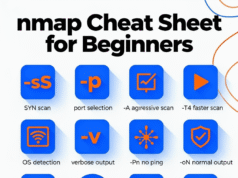The course is primarily intended for those who are professionally involved in or simply interested in OSINT. And you will find in it a lot about automation of collection and analysis of various data.
On my Twitter account, I regularly write about useful tools for OSINT, including various Linux utilities. And many times readers have asked, “Cool! Is it possible to run this on Windows?”.
Yes, there are different methods of running Linux utilities on Windows. But they are more complicated than running Linux on a VM (virtual machine), VPS (virtual private server) or in an online development environment.
This short tutorial is created to show you clearly that:
- Linux and the command line are very easy to use. Really easy. Extremely easy.
- hundreds of tasks (OSINT related and not only) can be simplified and automated with Linux.
- using Linux command line is a real, unparalleled pleasure.
This course is designed for the total beginners. I won’t even ask you to install a VM with Linux until the last day, all examples can be tried in a browser. You also won’t need any special knowledge. If you know how to use e-mail, you will be able to handle this course. Just relax and follow the instructions carefully.
When reading, keep in mind that this is a short course and so many things are left out. And really important things have been left out. It is designed primarily to show you the capabilities of Linux and to show you “which way to look” when faced with different tasks.
Who Should Avoid This Course?
Linux is good because you can solve the same problem in many different ways. I am not sure that the ways described in this course are the best and fastest ways to solve problems. They are written to visually show you the magic of the command line and stimulate your inner inventor (but all examples work and solve the stated problems).
I would advise the following categories of readers to treat this book as critically as possible and certainly read other Linux books:
- students who are preparing for exams
- IT specialists who are preparing for Linux-related job interviews
- people who want to become real Linux experts
- pentesters and bug hunters
This book is primarily about OSINT.
Day 0. Getting Ready To Work
Eric Raymond, in his article “How to become a hacker” (1 December 1997, recommended going to a local Linuxoid meeting and asking to burn discs of some distro in exchange for beer (I found this article, but link “where to get Linux” no longer working now).
In the last 26 years progress has gone a long way and I’ll just ask you to open a new tab in your browser.
Gitpod is a service that provides online development environments based on the Linux distribution Ubuntu. You can use it for 50 hours a month for free. This is definitely enough time for you to take this course many times.
You should use a Github account for authorization (registration is very fast and also free).
Open this link and create a workspace with standard settings:
If you are already using some Linux distribution, you can simply clone the repository to your computer or server.
If you don’t know how to clone repositories yet, I recommend using Gitpod for now. On Day 19 you will learn how to clone repositories, and on Day 21 you will think about which Linux distribution is best for you.
For more information click here.












%20Works.png)

.png)


